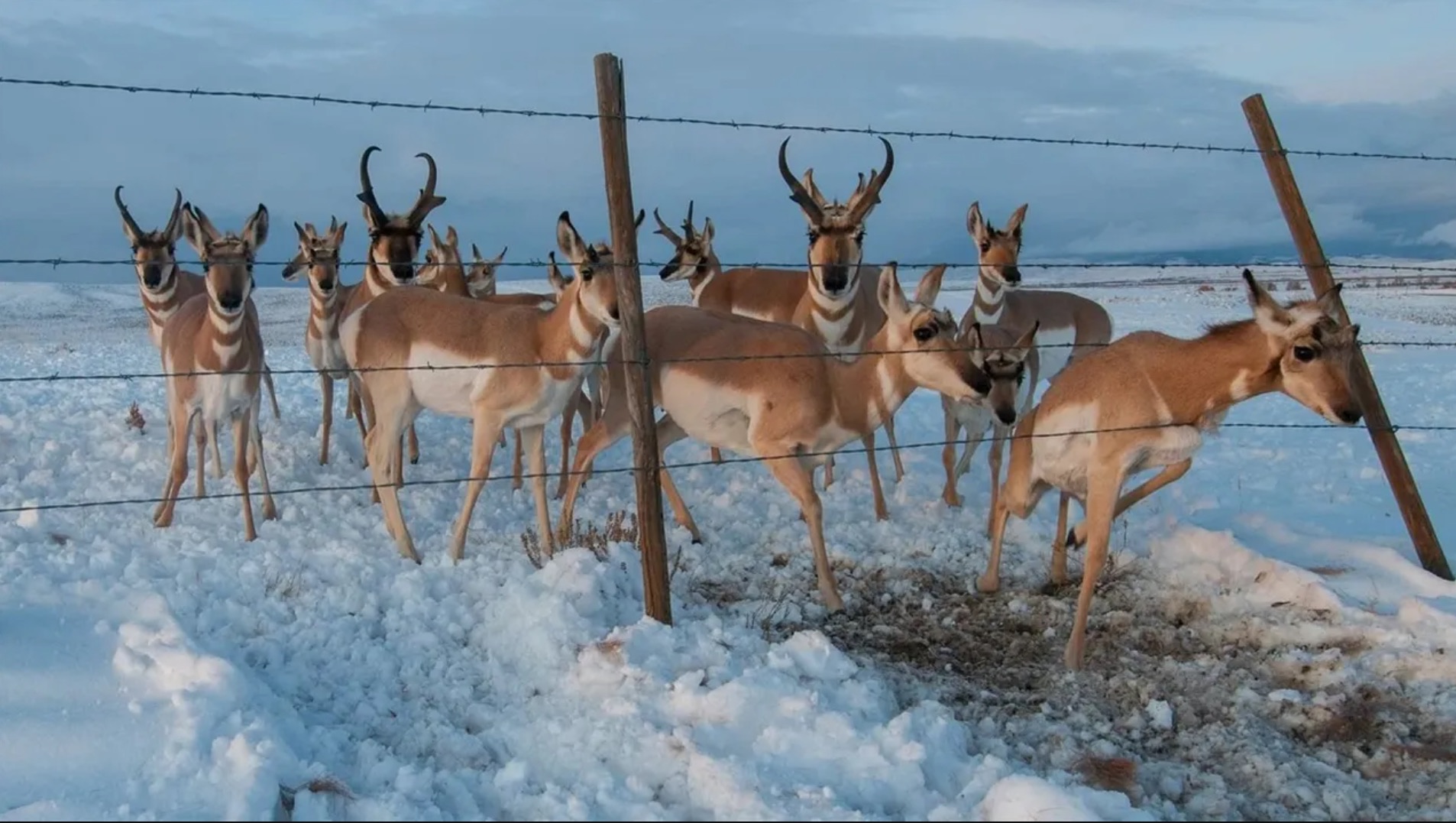
In November, the government of Montana finalized a strategy that blazes new ground for how states can identify and conserve wildlife migration routes. Montana, like most Western states, is experiencing human population growth that outpaces the national average, and an accompanying rise in development is increasing obstacles to wildlife along their ancient migration corridors.
The state’s migration strategy creates a framework for incorporating data on animal movements into policies and programs, and working more with partners to conserve critical wildlife habitat. The strategy focuses resources on mapping, conservation, and public education programs about migrating mule deer, pronghorn, elk, and other big game—species that are vital to hunting and wildlife tourism and help support Montana’s $2.5 billion outdoor economy.
Montana’s Department of Fish, Wildlife, and Parks (FWP), like its sister agencies in many Western states, has studied wildlife migration for decades. In the 1940s, agency researchers conducted some of the earliest studies on big game migration along the Rocky Mountain Front. In the 1960s, they helped develop early versions of wildlife collars that could transmit location and movement data.
But it’s only been in the past 15 years that GPS-enabled collars, and the precise and massive datasets they yield, have revolutionized what experts know about migrating wildlife. Armed with that information and new insights, state wildlife agencies are greatly advancing conservation strategies for these far-roaming animals.
In addition to improving the way that FWP educates the public about migrating wildlife, the strategy includes provisions to ensure that the agency will address migration corridors in its comments and recommendations on state land use and transportation plans, prioritize migratory habitat in state conservation funding programs, and optimize mapping and sharing of data on migrations and other landscape connectivity components. The plan also emphasizes the importance of coordination and collaboration with landowners and other key stakeholders, with the intent of finding common ground in conserving the big game herds that make Montana special.

Although the strategy is a significant step forward, there is opportunity to improve it in future iterations. The plan would benefit from a standardized approach for conserving the most critical components of a corridor, such as the area used most by migrating animals and “stopover” habitat where animals pause to forage along their route.
Nonetheless, Montana’s new plan does a great job of aligning procedures and policies with the latest science regarding wildlife migration, thereby equipping the state to better maintain and enhance the health of its economically and ecologically critical big game herds. The strategy opens the door to more—and more productive—dialogue by ensuring that local communities, private landowners, the sporting community, and other conservation interests have a seat at the table as implementation of the plan begins. Pew looks forward to seeing the strategy move forward in Montana and encourages other Western states to take notice of this science-based approach to conserving the American West’s heritage of migrating wildlife.
Matt Skroch is a project director and Nic Callero is a principal associate with The Pew Charitable Trusts’ U.S. public lands and rivers conservation team.

